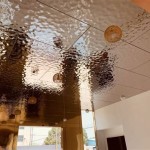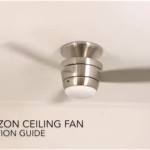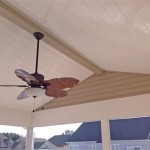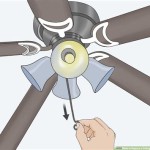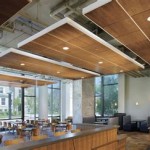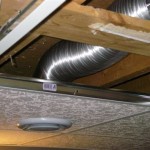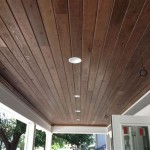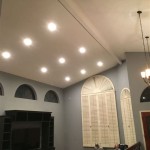Can You Put Paneling Over a Popcorn Ceiling? Understanding the Process, Problems, and Alternatives
The ubiquitous popcorn ceiling, a textured ceiling finish popular from the 1950s to the 1980s, is often viewed as outdated and undesirable in modern homes. Homeowners seeking to update their interiors frequently explore options for covering or removing these textured surfaces. One potential solution that arises is the application of paneling directly over the existing popcorn ceiling. This approach might seem like a quick and cost-effective way to achieve a smoother, more contemporary ceiling, but it involves a number of considerations that must be carefully evaluated before proceeding. This article will explore the feasibility of installing paneling over a popcorn ceiling, examining the potential benefits, drawbacks, challenges, and alternative solutions available to homeowners.
The decision to panel over a popcorn ceiling involves weighing several factors, including the condition of the ceiling, the presence of asbestos, the type of paneling being considered, and the homeowner's budget and skill level. A thorough understanding of these aspects is critical to making an informed decision and ensuring a successful outcome. Failure to properly assess these elements can lead to structural problems, aesthetic disappointments, and even health hazards.
Key Point 1: Assessing the Viability of Paneling Over a Popcorn Ceiling
The primary concern when considering paneling over a popcorn ceiling is the underlying structural integrity and the potential for long-term problems. Several factors contribute to this assessment.
First, the condition of the existing popcorn ceiling must be thoroughly evaluated. Is the texture firmly adhered to the ceiling drywall, or is it peeling, flaking, or crumbling? Loose or damaged popcorn ceiling requires immediate attention. Applying paneling over a compromised surface will only exacerbate the problem, potentially leading to the paneling detaching from the ceiling over time. In such cases, the popcorn ceiling must be stabilized, repaired, or removed before paneling can be considered. This might involve scraping away loose areas, applying a binding agent to re-adhere the texture, or skim-coating the entire ceiling with joint compound to create a smooth surface.
Second, the presence of asbestos in the popcorn ceiling presents a significant health hazard. Popcorn ceilings installed before the late 1970s often contain asbestos, a known carcinogen. Disturbance of asbestos-containing materials can release fibers into the air, posing a serious risk of respiratory illness. Before undertaking any renovation work that involves disturbing a popcorn ceiling, it is crucial to have the material tested by a certified asbestos abatement professional. If asbestos is present, its removal by a qualified contractor is essential to ensure the safety of the occupants. Attempting to remove or cover asbestos-containing popcorn ceiling without proper precautions is highly discouraged and can have severe consequences.
Third, the method of attachment is critical. Simply gluing panels to the popcorn ceiling is rarely a viable option. The texture's uneven surface provides a poor substrate for adhesive, and the weight of the paneling can cause the adhesive to fail over time. A more secure method involves attaching furring strips to the ceiling joists through the popcorn texture. These furring strips provide a solid, level surface to which the paneling can be attached using nails or screws. The spacing of the furring strips will depend on the type of paneling being used and the load-bearing capacity of the ceiling joists.
Finally, consider the added weight. Adding paneling, even lightweight varieties, increases the load on the ceiling joists. It's important to determine if the existing structure can support the added weight without compromising its integrity. If there is any doubt, consulting a structural engineer is advisable. They can assess the load-bearing capacity of the ceiling and recommend necessary reinforcements, such as adding additional joists or strengthening existing ones.
Key Point 2: Potential Problems and Challenges of Paneling Over Popcorn Texture
While paneling over a popcorn ceiling might appear to be a straightforward solution, it presents several potential problems and challenges that homeowners should be aware of.
One significant issue is the reduction in ceiling height. Adding paneling and furring strips inevitably lowers the ceiling, which can be particularly problematic in rooms with already low ceilings. This reduction in height can create a feeling of confinement and make the room appear smaller. Before proceeding, carefully measure the existing ceiling height and calculate the net decrease after installing the paneling to ensure it remains comfortable and aesthetically pleasing.
Another challenge is achieving a smooth, level finish. Popcorn ceilings are inherently uneven, and simply attaching paneling directly to the texture will likely result in an uneven surface. Using furring strips helps to create a more level base, but it still requires careful attention to ensure that the strips are properly aligned and shimmed where necessary. Any imperfections in the furring strip installation will be transferred to the paneling, resulting in visible waves or dips in the finished ceiling.
Moisture and ventilation can also pose problems. Covering a popcorn ceiling can trap moisture, potentially leading to mold growth and deterioration of the underlying materials. Proper ventilation is crucial to prevent these issues. Ensure that the room is adequately ventilated and that any sources of moisture, such as leaks or condensation, are addressed before paneling the ceiling. Using moisture-resistant paneling can also help to mitigate the risk of moisture damage.
The aesthetic outcome is another consideration. While paneling can create a more modern look, it can also appear dated or out of place depending on the style of the paneling and the overall design of the room. The choice of paneling should complement the existing décor and architectural style of the house. Consider the color, texture, and pattern of the paneling carefully to ensure that it creates the desired effect.
Furthermore, accessing electrical wiring and plumbing that might be located above the ceiling becomes more difficult after paneling is installed. If repairs or modifications are needed, the paneling may need to be partially or completely removed, adding extra time and expense to the project. Before installing paneling, carefully consider the potential for future maintenance or repairs and plan accordingly.
Key Point 3: Alternative Solutions for Covering or Removing a Popcorn Ceiling
Given the potential challenges associated with paneling over a popcorn ceiling, it's essential to consider alternative solutions for updating the ceiling's appearance. These alternatives may offer a more effective and less problematic approach to achieving the desired aesthetic.
The most common alternative is the complete removal of the popcorn texture. This involves scraping the texture off the ceiling, followed by patching any imperfections and applying a smooth finish. While this can be a labor-intensive process, it provides the cleanest and most professional-looking result. However, it's crucial to remember the potential presence of asbestos and to have the ceiling tested before undertaking any removal work. If asbestos is present, professional abatement is necessary.
Another option is to skim-coat the popcorn ceiling with joint compound. This involves applying multiple thin layers of joint compound over the existing texture to create a smooth, level surface. This method is less disruptive than removal but requires skill and patience to achieve a flawless finish. It's important to use a lightweight joint compound and to sand each layer thoroughly to minimize the weight added to the ceiling.
Installing a suspended or drop ceiling is another alternative. This involves hanging a grid of metal tracks from the existing ceiling and installing panels or tiles into the grid. Suspended ceilings can be a quick and easy way to cover a popcorn ceiling and can also provide access to wiring and plumbing. However, they typically lower the ceiling height more significantly than other options and may not be suitable for rooms with low ceilings.
Applying a textured paint or coating designed to encapsulate the popcorn texture can provide a refreshed appearance without completely removing the texture. These coatings are typically thicker than regular paint and can help to smooth out the surface and hide imperfections. However, they may not be suitable for ceilings with heavily textured or damaged popcorn.
Finally, installing drywall directly over the popcorn ceiling can create a smooth, new surface. This involves attaching drywall sheets to the ceiling joists through the popcorn texture. This method is more involved than skim-coating but provides a durable and long-lasting solution. It's important to ensure that the ceiling joists are strong enough to support the added weight of the drywall and to use appropriate fasteners.
Ultimately, the best solution for updating a popcorn ceiling will depend on the specific circumstances of the project, including the condition of the ceiling, the presence of asbestos, the budget, and the desired aesthetic. Careful consideration of all available options is essential to making an informed decision and achieving a satisfactory outcome.

The Best Way To Cover Popcorn Ceilings With Beadboard Shoe Makes New

How To Plank A Popcorn Ceiling

How To Cover Popcorn Ceilings With Beadboard

How To Cover Popcorn Ceiling With Beadboard Planks Diy Tutorial

How Much Does It Cost To Install A Beadboard Ceiling 2024 Data Angi

How To Easily Plank A Textured Ceiling Sincerely Marie Designs

How To Cover Popcorn Ceilings With Beadboard

Easily Cover Popcorn Ceilings With Shiplap

How To Cover Popcorn Ceiling With Beadboard Planks Diy Hometalk

Diy Beadboard Ceiling Tutorial Easy And Inexpensive Custom Treatment
Related Posts

